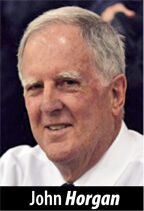For more than a century, Sunset Magazine has been a big-time booster of the good life in California and the Far West. The publication — and its associated books — have become a go-to source for information and suggestions for suburban homeowners throughout the Golden State and beyond.
Sunset’s own sprawling one-time property in Menlo Park, which dates back to 1951 when the Lane family bought it, became a veritable laboratory for those desiring to create an ethos of ease and comfort in these sunny climes.
What became Sunset’s low-slung, ranch-style headquarters and lush gardens were seen as emblematic of a much-desired lifestyle on the West Coast. No more.
Sunset’s property on Willow Road sits mostly vacant (a portion has reportedly been leased) as a developer seeks to replace the old HQ and its rambling, leafy ambience with a set of impersonal high-rise structures, at least one as tall is 460 feet, embracing offices, apartments and amenities, the very antithesis of what the magazine has long touted as ideal. The bald irony of high-rises looming there is too stark to miss.
If the developer gets his way, it will be one more dagger in the heart of the Peninsula that is under great pressure to provide more housing.
Citizens in Menlo Park (and some in neighboring towns) are fighting the development plans. They have already succeeded in having a state body agree that the Sunset structure is worthy of consideration as a protected historical property. That designation, by itself, could delay, significantly alter or even kill off the current proposal.
Although Sunset’s old Menlo Park property, sold to real estate interests in 2014, sits barely used today, the magazine itself continues to be published under new ownership, with main offices in the East Bay.
Sunset was originally created in 1898 by what was then the Southern Pacific Railroad as a promotional vehicle for the development of its vast land holdings, particularly in California. The magazine waxed rhapsodic about all aspects of the region and touted the many reasons to settle here.
The Lane family purchased the publication in 1929 (with headquarters then in San Francisco) and, after weathering the Great Depression and World War II, it thrived as the population boomed along the West Coast.
The move to the spacious Menlo Park campus, roughly 7 acres in size, provided an opportunity to put Sunset’s ideas and recommendations into practical action; they could be tested and analyzed right there on site and then the findings and suggestions would be passed on to its growing readership.
A SEAL COVE NIGHTMARE: It’s a seemingly endless nightmare on the coastside. The tiny Seal Cove neighborhood in Moss Beach, located off Highway 1 near the Fitzgerald Marine Reserve and not far from the Half Moon Bay Airport, is slowly moving in a geologic phenomenon that is damaging properties and causing considerable alarm as the land shifts sporadically and disturbingly. Remedies, if any, have not been forthcoming in any satisfactory way. San Mateo County authorities are well aware of the coastal issues but, so far, have come up with no real solutions. Residents are justifiably perplexed and upset as the forces of nature prove to be utterly unforgiving in that unstable coastal area.
BREWERY CELEBRATES 25 YEARS: Not far from Moss Beach, Pillar Point Harbor and its environs continue to be a coastal lure for fishers, recreation enthusiasts, tourists and others. One of the attractive dining/imbibing options in that immediate area is observing its 25th anniversary this year. The Half Moon Bay Brewing Company has managed to survive a quarter century marred by economic ups and downs that, unfortunately, killed off too many other operations of a similar genre. The brewery will officially celebrate its 25th year of business June 28 from noon to 4 p.m.
BROWN’S ’84 TRIFECTA ENDURES: In 1984, Wendy Brown of Woodside High School captured first-place medals in the high jump, long jump and triple jump at the California Interscholastic Federation track and field meet. She won the girls’ team title by herself, a stunning achievement. This past weekend, a biological boy competing as a girl nearly duplicated Brown’s historic feat by winning the high jump and triple jump and finishing second in the long jump at the state meet. The transgender teen came close but Brown’s unique individual trifecta haul of gold medals endures 41 years later.
John Horgan has been writing about San Mateo County, to the tune of an estimated 7 million words, since 1963, beginning at the now-defunct Burlingame Advance Star newspaper. He can be contacted by email at johnhorganmedia@gmail.com.






















(0) comments
Welcome to the discussion.
Log In
Keep the discussion civilized. Absolutely NO personal attacks or insults directed toward writers, nor others who make comments.
Keep it clean. Please avoid obscene, vulgar, lewd, racist or sexually-oriented language.
Don't threaten. Threats of harming another person will not be tolerated.
Be truthful. Don't knowingly lie about anyone or anything.
Be proactive. Use the 'Report' link on each comment to let us know of abusive posts.
PLEASE TURN OFF YOUR CAPS LOCK.
Anyone violating these rules will be issued a warning. After the warning, comment privileges can be revoked.